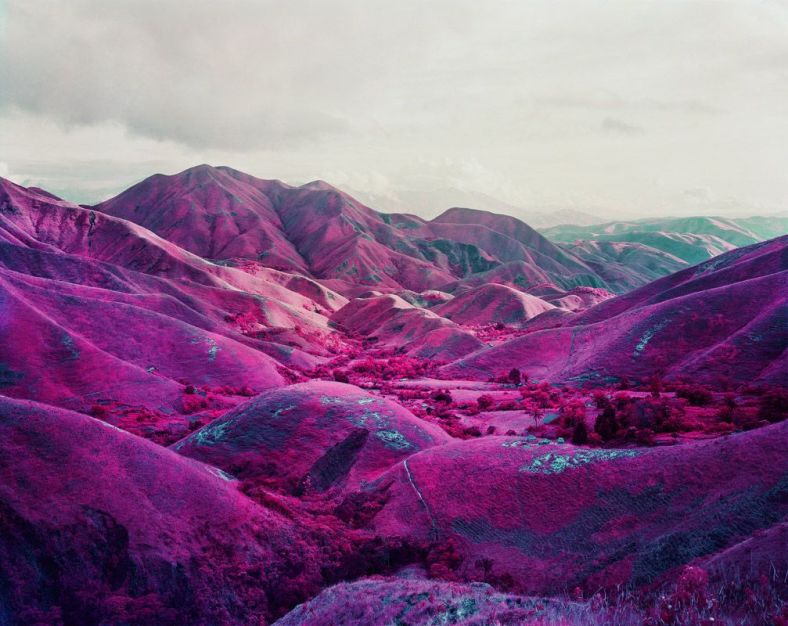 Richard Mosse, ‘Vintage Violence’ (from The Enclave), 2011, Digital C-print, Courtesy The Photographer’s Gallery.
Richard Mosse, ‘Vintage Violence’ (from The Enclave), 2011, Digital C-print, Courtesy The Photographer’s Gallery.
Richard Mosse is the winner of the Deutsche Börse Photography Prize 2014 . His photographic series ‘The Enclave’ is on show at the Photographer’s gallery, London, 11 April – 22 June 2014.
This text is published on Apollo Magazine (published June 20 2014).
The ethics and politics of documentary photography and photojournalism are much debated. In his photographic series The Enclave Richard Mosse stages his own critique of photography’s association with objective truth. His highly staged, colour-saturated images of landscapes and human subjects from the Democratic Republic of Congo appear unreal: they declare their artifice.
Aware, at least in theory, of the ethical conundrums surrounding the representation of war, Mosse self-consciously mobilises colour to make us think. His landscapes are shot on Aerochrome, Kodak’s colour infrared film. Now discontinued, it was deployed by the military as a surveillance technology to identify camouflaged targets. It turns his subjects overwhelmingly pink. These are not photographs to be looked at with cool detachment; they provoke optical and bodily sensations. Ifeel as I look at them.
Mosse’s monumental and apparently unpeopled landscapes are (as visual images) most compelling. They would make for a fascinating study in the history of landscapes of war in art and photography. The nightmarish, deeply affecting pinkness and the play of oppositions (natural/artificial; visible/invisible) is full of critical possibilities. But I find no critical value in his representations of soldiers, who are presented in the mannered mode of fashion photography. The titling of Mosse’s photographs also makes me flinch: ‘Vintage Violence’, in particular, is a grotesque and naïve juxtaposition.
While I am engaged by the idea of colour as a visual strategy I am not at all convinced by its critical significance to Mosse’s geographical subject, the Democratic Republic of Congo (its eastern region). I am uncomfortable with the idea of a European photographer re-imagining a subject already freighted with an especially brutal colonial past and a complex series of subsequent conflicts. What of the history of colonialism and the violence of the transition into independence; the country’s relationship to Cold War politics and post-colonial dictatorships; the regimes of neighbours such as Rwanda; war-related violence that includes rape, and the narrative of capitalism and western/African relations? What does all this mean to Mosse’s subjects, for whom these histories represent a psychic wound, a trauma that has yet to be fully acknowledged? Such issues remain to be processed in Mosse’s London exhibits.
Is Mosse perpetuating the idea of an imagined Other? The idea of the European travelling photographer adventuring into the imagined hinterlands of Africa is rooted discomfortingly in historical concepts of colonialism and race. The artist was born in Kilkenny, Ireland (1980), and could perhaps focus on his own context and historical conditions. It is time, in the 21st century, for photographers such as Mosse to give more thought to the idea of self-reflexivity – one of the most important lessons to be learnt from 20th-century post-colonial thought, that still presents challenges for both historians and artists alike.
The Deutsche Börse Photography Prize is at the Photographers’ Gallery, London, until 22 June.
 Richard Mosse, ‘Nowhere to Run’ (from The Enclave) 2010, Digital C-print, Courtesy The Photographer’s Gallery.
Richard Mosse, ‘Nowhere to Run’ (from The Enclave) 2010, Digital C-print, Courtesy The Photographer’s Gallery.